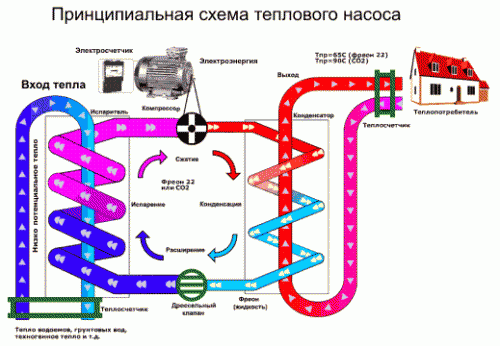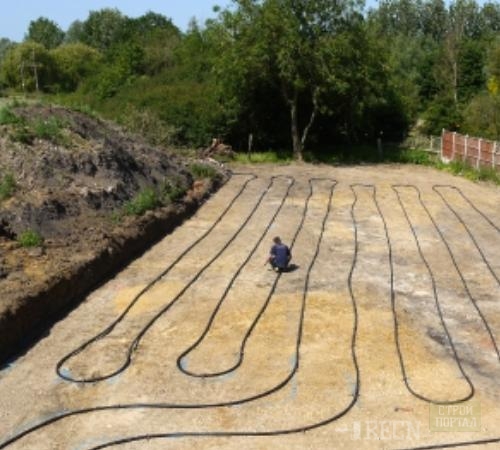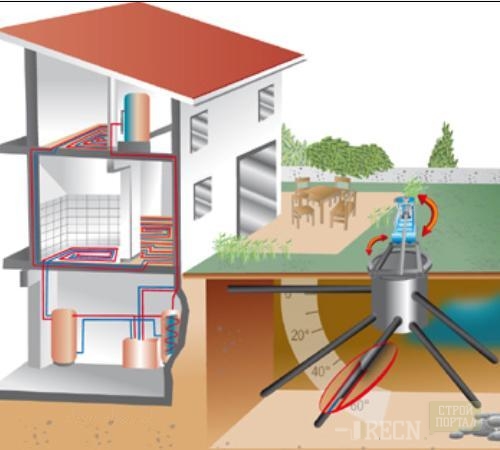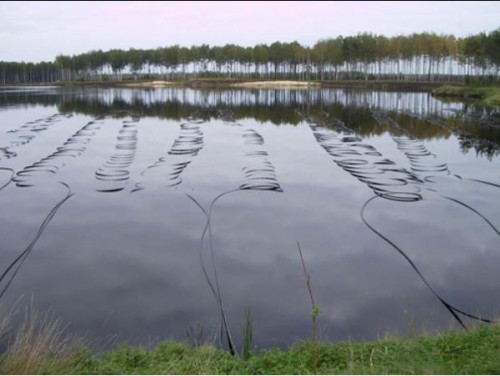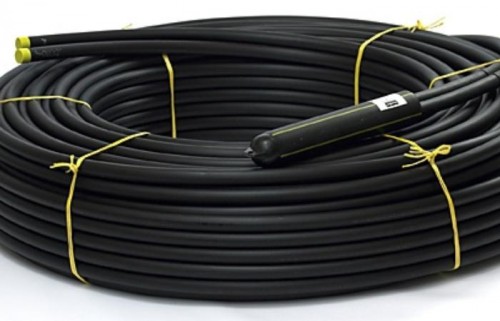
Geothermal home heating - the principle of work, features, advantages and disadvantages Climate

The development of technologies allows the use of self-healing energy sources - wind, the water of the Earth. Over the past decade, the production of installations that use geothermal energy has increased several times.
Content
For example, in Sweden, more than 70% of new buildings use a heating system that uses the Earth's energy. Another advantage of such a system is that in the summer period of the year it performs the function of passive air conditioner.
Principle of operation of the geothermal heating system
The heart of the geothermal heating system is a thermal pump. Using the carno cycle, it turns the low-temperature coolant of the geothermal contour into heated to 50 ° C heat carrier heating. At the same time, efficiency at such work is 350-450%. The engine weight of the heat pump to overhaul is 100 thousand hours.
The temperature of 50 ° C is optimal for the maximum efficiency of the heat pump. Therefore, for heating at home it is advisable to use a warm floor or air heating, since radiator heating systems are poorly suitable for operation in geothermal heating systems.
Ultimately, we have: on 1 used electric energy used, we get about 3.5 kW of heat, which due to the increase in the cost of coolants, is essential to save their own budget.
Functional features of the system
The geothermal system of a private house consists of three contours:
- The ground collector is a system of special pipes, with a reserved reserving pump. The temperature of the external contour coolant varies within 3-7 ° C. Delta at 4 ° C is enough for the heating system. The heat carrier, mainly, is ethylene glycol or a mixture of ethylene glycol and water.
- The contour of the heat pump "takes" heat from the ground collector and transmits the home heating system. Depending on the area of \u200b\u200bthe house and the necessary thermal power, it can produce up to 3500 kW of heat. The coolant for pumps of different manufacturers serve: Thermia and Mammoth - ethylene or propylene glycol, for Heliotherm - Purona gas.
- The contour of the heating system, in which the coolant heated to 45-50 ° C enters the heating system.
Designs of geothermal heating systems
When installing a geothermal system, the differences mainly concern only the external ground collector. There are four main outline circuits:
- Horizontal - the ground collector is placed below the depth of the fruit of the soil (from one to one and a half meters for different regions of the country). As a pipe of an external collector is used: metalplastic, copper in PVC shell. Earth heat transfer is 10-25 W / m 2 and up to 50 W / m 2 For soil with a high level of groundwater. To obtain 7-9 kW of thermal energy, the collector area will be 300-500 m 2 , depending on the installation conditions. With such a laying of the collector, it is not allowed to dig trenches near the trees closer than 1.5 m. Implementation of territory and landscape work is necessary at the end of the installation of the system.
- Vertical accommodation - for mounting a few wells, in different directions and at different angles. Geothermal probes are laid in well. In this case, the heat transfer is about 50 W / mp. Thus, to obtain the same 7-9 kW of thermal energy, it is necessary 150-200 meters of wells. In this case, the landscape design of the site will not suffer, it takes quite a bit of space to install the caisson and place the collector in it.
- Water-based contour - an external heat exchanger is mounted in a nearby reservoir at a depth of 2-3 meters. One of the basic requirements for such a heat exchanger is the proximity of the house to the pond to 100 m, and the surface area of \u200b\u200bthe reservoir should be at least 200 m 2.
- Air heat exchanger - the outer circuit takes heat from the air. It is effectively installed in the southern regions of the country. The main advantage of such a scheme is the absence of any earthworks, and a disadvantage of such an occupancy of equipment - the fall of the installation efficiency up to 100% at a temperature of -15 ° C. And it is not completely possible to operate at a temperature of -20 ° C.
Advantages of the geothermal heating system
Let's consider the main advantages of such a heating system:
- high efficiency - 350-400%;
- stable thermal characteristics of the heat pump;
- small installation volume;
- lines of the geosonder service is up to 100 years, heat pump - up to 30 years;
- ability to provide air conditioning;
- energy independence;
- maximum autonomy.
Prospects for the development of geothermal systems
Geothermal type heating systems are low popular through their cost. So for home, about 200 m 2The geothermal system of turnkey heating is about one million rubles, the lion's share is 30%, the heat pump.
In the Baltic countries and Western Europe, when the owner of the house establishes the system on self-healing heat sources, in which case the state compensates part of the cost of installing this system. At the same time, the payback of the geothermal heating system is up to 5 years. Since the system is fully automated and does not require human intervention, the level of comfort is much higher than when heating with other types of fuel. The choice is yours.




